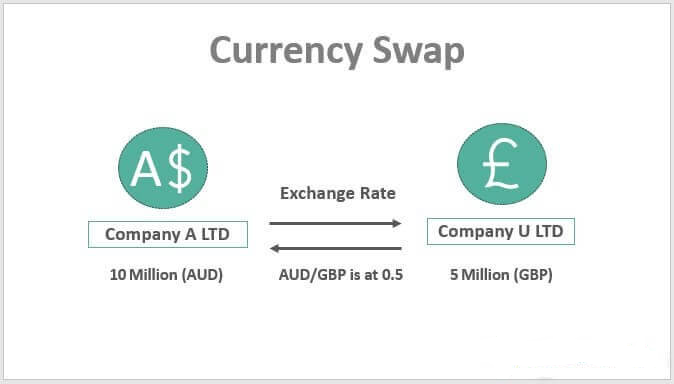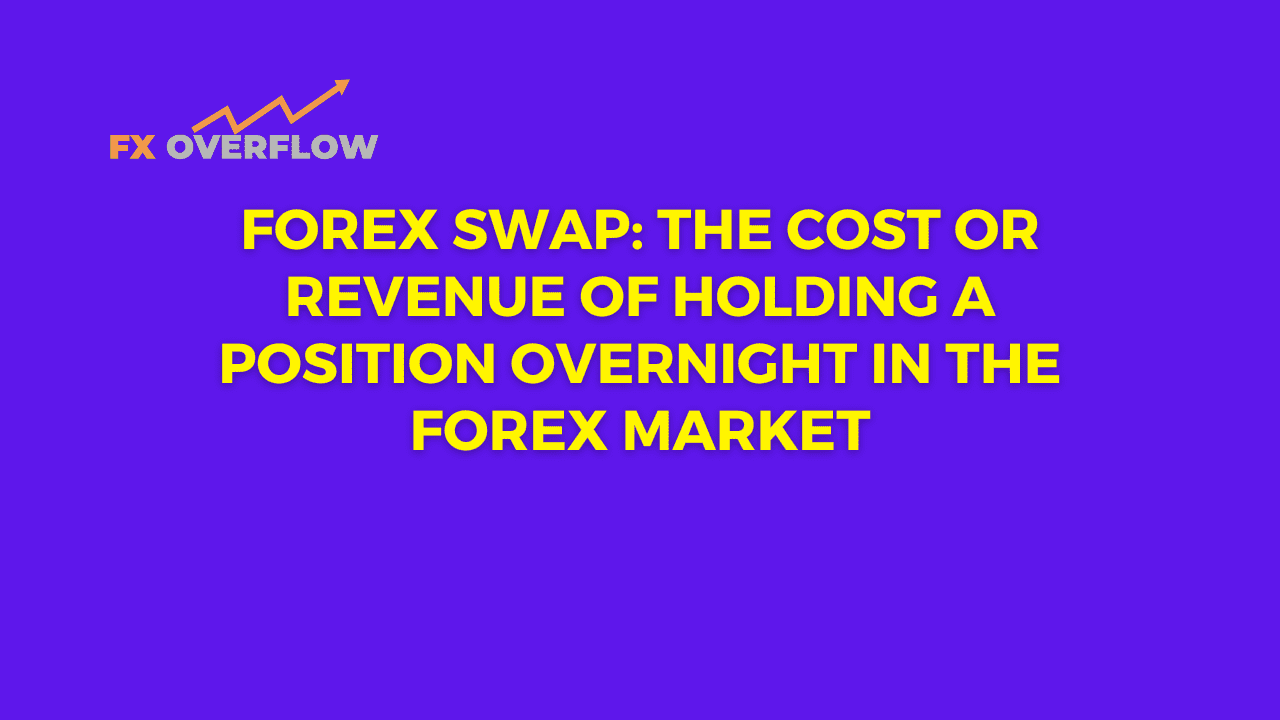Forex Swap: The Cost or Revenue of Holding a Position Overnight in the Forex Market
In the fast-paced world of foreign exchange (forex) trading, traders constantly engage in buying and selling currencies to profit from the fluctuations in exchange rates. Forex trading operates 24/5, and traders often prefer holding positions for a short period. However, some strategies require keeping positions open overnight. This practice may result in additional costs or even revenue, known as a "forex swap."
Table Content
1. Understanding the Forex Market
2. What is a Forex Swap?
3. Calculating the Cost or Revenue of Holding a Position Overnight
4. Impact of Forex Swap on Traders
5. Managing Forex Swaps
6. Common Misconceptions about Forex Swaps
7. Tips for Minimizing Forex Swap Costs
8. The Future of Forex Swaps
9. Footnote
10. FAQs
Understanding the Forex Market
Before delving into forex swaps, it's essential to understand the basics of the forex market. The forex market is the largest financial market globally, where currencies are traded against each other. Currencies are grouped in pairs, such as EUR/USD (Euro/US Dollar) or GBP/JPY (British Pound/Japanese Yen).
Traders speculate on the rise and fall of exchange rates, aiming to make profits by buying low and selling high or vice versa. Factors like economic indicators, geopolitical events, and market sentiment influence currency prices.

What is a Forex Swap?
· Definition and Purpose
A forex swap, also known as a "rollover" or "overnight swap," is a financial transaction that involves the simultaneous purchase and sale of the same amount of one currency for another. The transaction has two legs: a spot transaction and a forward transaction. The spot transaction settles immediately, while the forward transaction is set for a specific date in the future.
The primary purpose of a forex swap is to extend the settlement date of a position held by a trader. It allows traders to maintain their positions overnight without violating the forex market's T+2 settlement rule.
· How Forex Swaps Work
Let's take an example to understand how forex swaps work. Imagine a trader buys 100,000 USD and simultaneously sells an equivalent value of 80,000 EUR. The trader plans to hold this position for more than one trading day. Instead of closing the position and reopening it the next day, the trader can use a forex swap to extend the position.
During the rollover, the trader will pay or receive the interest rate differential between the two currencies. This differential is determined by the central banks' interest rates of the respective countries. The trader earns the interest rate of the currency bought and pays the interest rate of the currency sold.
Calculating the Cost or Revenue of Holding a Position Overnight
· Factors Affecting Forex Swap Rates
The forex swap rates depend on various factors, including the interest rate differential, liquidity conditions, market sentiment, and economic events. Central bank policies and geopolitical developments also play a significant role in determining these rates.
· Examples of Calculating Forex Swap
To calculate the cost or revenue of holding a position overnight, traders must consider the swap points provided by their brokers. Swap points are either positive or negative, indicating whether the trader will receive or pay the swap.
For instance, if the trader is long on a currency pair with a higher interest rate than the
short currency, they will receive a positive swap, leading to additional revenue. Conversely, if the trader is long on a currency pair with a lower interest rate than the short currency, they will pay a negative swap, resulting in additional cost.
Impact of Forex Swap on Traders
· Hedging Strategies
Forex swaps can serve as essential tools for hedging currency risk. Traders who have exposure to foreign currencies can use forex swaps to protect their positions against adverse exchange rate movements.
· Cost Considerations
Traders need to be mindful of the potential costs incurred through forex swaps. The cost of holding a position overnight can impact the overall profitability of a trade.
· Revenue Opportunities
On the flip side, if traders plan their positions strategically, forex swaps can offer revenue opportunities. By capitalizing on favorable interest rate differentials, traders can turn the overnight swap into a source of income.
Managing Forex Swaps
· Risks and Mitigation
As with any financial instrument, forex swaps carry some risks. Interest rate changes, unexpected market events, and geopolitical factors can affect swap rates. Traders should be aware of these risks and adopt risk management strategies accordingly.
· Strategies for Optimizing Swaps
Traders can optimize forex swaps by conducting thorough market analysis and staying informed about economic indicators and central bank policies. Developing sound trading strategies and timing the trades strategically can also help optimize swap costs and potential revenue.
Common Misconceptions about Forex Swaps
· Avoiding Misunderstandings
Forex swaps are often misunderstood, leading to misconceptions and misinformation. Traders should seek reliable sources to gain accurate knowledge about how swaps work to make informed decisions.
· Clearing Myths
One common myth is that forex swaps are a form of interest charged by brokers. In reality, swaps are a result of the interest rate differential between the traded currencies.
Tips for Minimizing Forex Swap Costs
· Best Practices for Traders
To minimize forex swap costs, traders should be selective about their positions and avoid keeping large open positions during times of high market volatility.
· Utilizing Market Analysis
Conducting comprehensive market analysis can help traders anticipate interest rate movements and make informed decisions on their positions.
The Future of Forex Swaps
· Evolving Trends
As the forex market continues to evolve, the concept of forex swaps may undergo changes. Traders should stay updated with the latest trends and developments in this area.
· Technological Advancements
Advancements in technology and automation could streamline forex swap processes and enhance efficiency.
Footnote
In Summary, forex swaps play a crucial role in the currency trading landscape. They allow traders to hold positions overnight while accounting for the interest rate differentials between currencies. Proper understanding and management of forex swaps can enhance traders' strategies, either by reducing costs or presenting revenue opportunities.
FAQs
- What is the purpose of a forex swap?
- The purpose of a forex swap is to extend the settlement date of a position held by a trader, allowing them to maintain positions overnight without violating the forex market's T+2 settlement rule.
- How are forex swap rates calculated?
- Forex swap rates are determined based on factors such as the interest rate differential, liquidity conditions, market sentiment, and economic events.
- Can forex swaps be used for hedging currency risk?
- Yes, forex swaps can serve as essential tools for hedging currency risk, protecting traders from adverse exchange rate movements.
- What risks are associated with forex swaps?
- Risks associated with forex swaps include interest rate changes, unexpected market events, and geopolitical factors that can impact swap rates.
- How can traders optimize forex swaps?
- Traders can optimize forex swaps through thorough market analysis, timing trades strategically, and staying informed about economic indicators and central bank policies.











Discussion